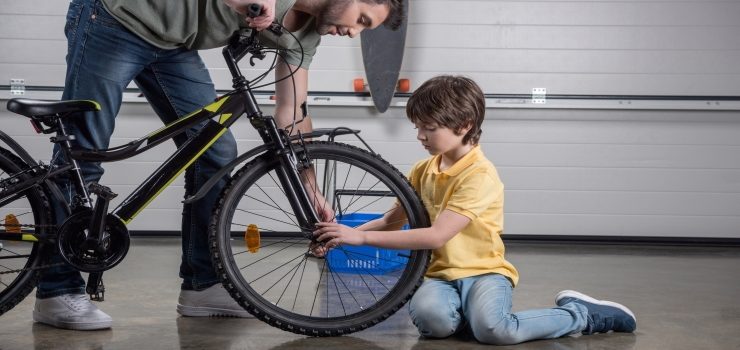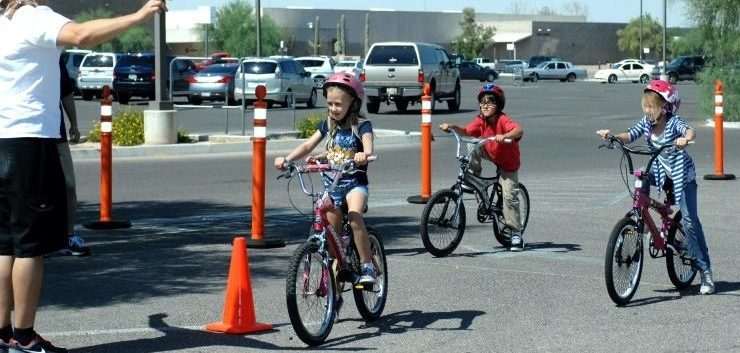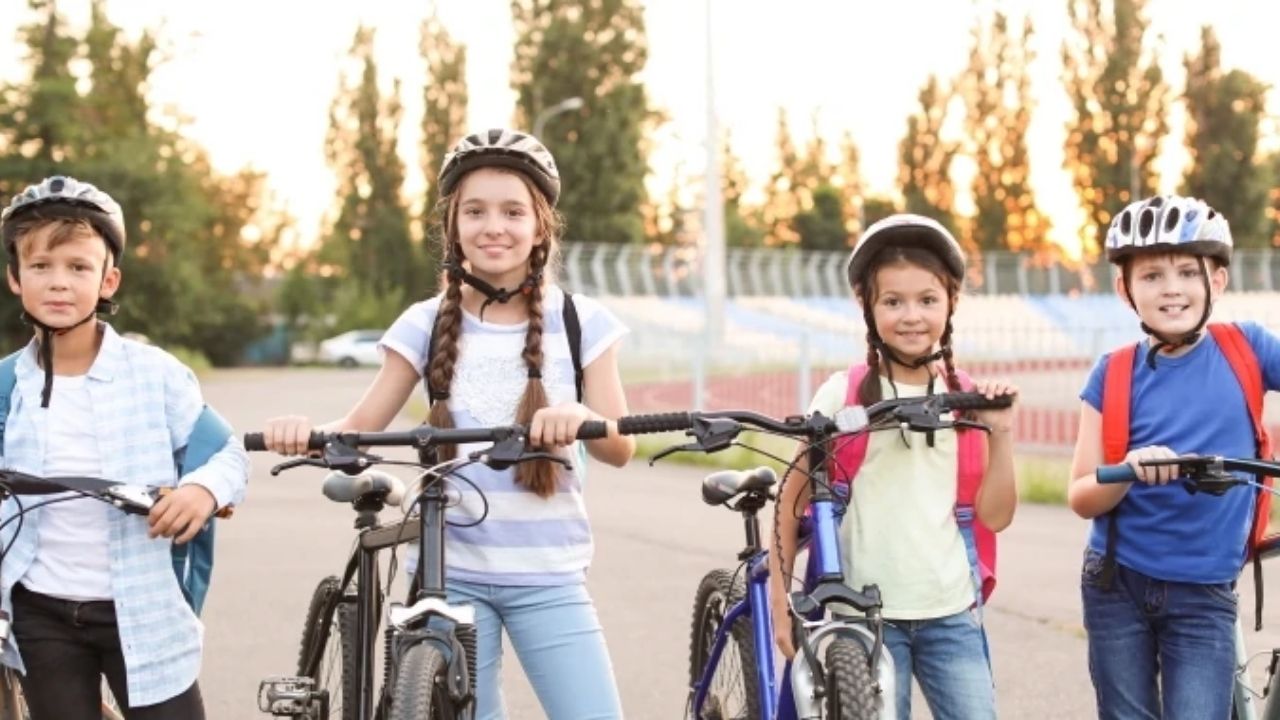Besides getting from Point A to Point B, walking or biking can be great exercise and a lot of fun for kids. However, there can be dangers involved, especially if biking or walking on busy streets.
To keep your kids safe, you need to teach them important safety precautions for biking or walking in public. Some of those precautions include wearing proper protective gear, following traffic rules, identifying and avoiding road hazards, and taking safe routes.
In this article, we’ll discuss these and other safety tips in detail. By the end, you’ll have all the information you need to share with your kids about biking or walking safely on the streets.
Page Contents
The Best Safety Rules for Kids Who Are Biking or Walking
Wear Protective Gear
If your child experiences a fall or collision while cycling at above-average speeds, wearing a helmet will minimize or even completely prevent injury to his/her face, head, and brain. For a helmet to provide this level of protection, it must fit properly. It also needs to meet the minimum safety requirements set by the Consumer Product Safety Commission (CPSC).
Aside from a helmet that bears the CPSC sticker of approval, make sure your child also wears the following protective gear:
- Elbow and knee pads
- Proper fitting pants that give free range of motion
- Sneakers with properly tied and tucked laces. Sandals or slippers may interfere with pedaling
A Properly Sized Bike
A bike that is the wrong size for your child is uncomfortable and dangerous. That’s because your child will have a harder time balancing and controlling it. You’ll know that a bike is a good fit when your child can straddle it with both feet firmly resting on the ground. Another sign that it’s a good fit is when there are at least 1 to 3 inches between their knees and the top bar.
Safety Checks Before Each Use
Teach your child to perform basic checks before riding a bike. The most important safety checks are:

- Ensuring the seats, pedals, wheels, and handlebars are properly installed and adjusted
- Testing the brakes, verifying they are gripping well and not sticking
- Checking the bike chain and oiling it if necessary
- Verifying there is enough air in both tires
Always stay Visible
Many cycling accidents stem from cyclists being unseen until it is too late. You can protect your kids from such dangers by ensuring they wear brightly colored clothing before going out. It’s also a useful safety precaution for kids taking a walk in low-lighting conditions.
By wearing visible clothing, other road users will spot your child quickly and easily, enabling them to take early measures to prevent an accident. If your child isn’t a fan of colorful clothing, they can achieve the same results by wearing clothing with reflective bits or installing reflectors on the front, back, and tires of their bike.
However, they shouldn’t wear headphones. Hearing is just as important as seeing when cycling. Headphones can be a big distraction that stops a cyclist from hearing the blaring horn of an oncoming vehicle. They should also, under no circumstances, use a cell phone while cycling.
Also, teach your kids to use their bike bell liberally, especially if they suspect other road users aren’t aware of them.
Avoid Night Cycling
At night, visibility is reduced for everyone. Wearing bright colors or reflective clothing will make your cycling child more visible, but there are still risks. Walking or cycling at night may expose your child to certain criminal elements.
You can eliminate such risks by letting your child cycle only during periods of optimal visibility. If your child must ride at night, make sure the bike has a functional headlight. If your child is walking, teach him/her to avoid being approached or lured in by strangers.
Take Safe Routes
The shortest route from Point A to B isn’t always the best or the safest. Show your kids the safest cycling routes and teach them to stick to those routes. Introduce them to alternate routes for occasions when the primary path is impassable.
The best routes for child cyclists are those with well-trained crossing guards. If your child is younger than ten, it’s recommended they always ride on the sidewalk. Older kids can cycle on the streets, but teach them to always ride with traffic, never against it.
Know the Traffic Rules

Whether riding on or off the street, it’s best if your child cycles with friends. After all, there is safety in numbers.
Before your child starts cycling on the street, he/she must also learn the following traffic rules:
- Hands must always be on the handlebars while cycling.
- Check traffic coming from both directions before entering a street.
- At busy intersections, don’t ride. Instead, use the crosswalk to walk your bike across and follow the traffic signals.
- Always ride on the right side of the street. Doing otherwise means facing oncoming traffic.
- When available, use bike lanes.
- Never ride too close to parked or moving cars.
- Stop at all stop signs and obey traffic lights.
- Use the correct turn signals early and never turn without checking what’s coming from behind.
- Ride single file on the street, not side-by-side.
- Overtake other bikers on their left side. Calling out “on your left!” or using your bell when overtaking will minimize the risk of collisions.
It doesn’t matter if your child is cruising around the neighborhood or going to school. By ensuring he/she adheres to all of the above when going for a walk or biking, there is less risk of something going wrong.
References
- Bike Safety – KidsHealth
- Kids and Bicycle Safety – NHTSA
- Teaching Children Bicycle Safety – Saint Luke’s
